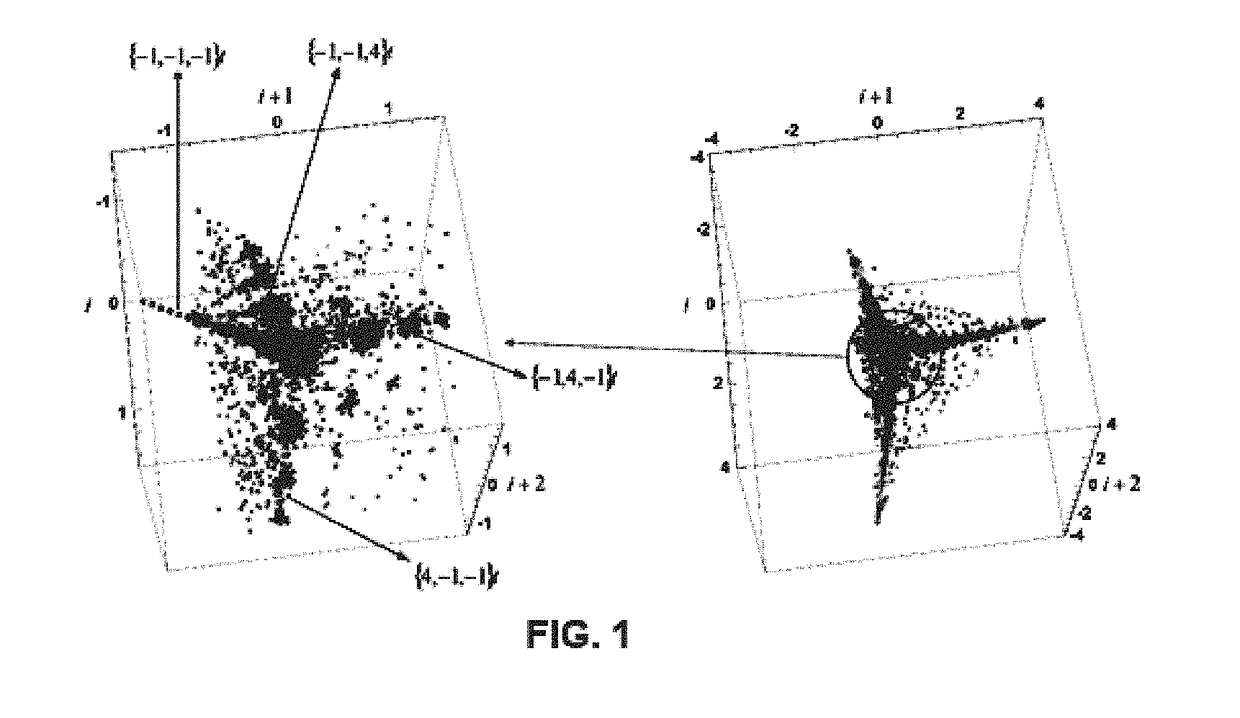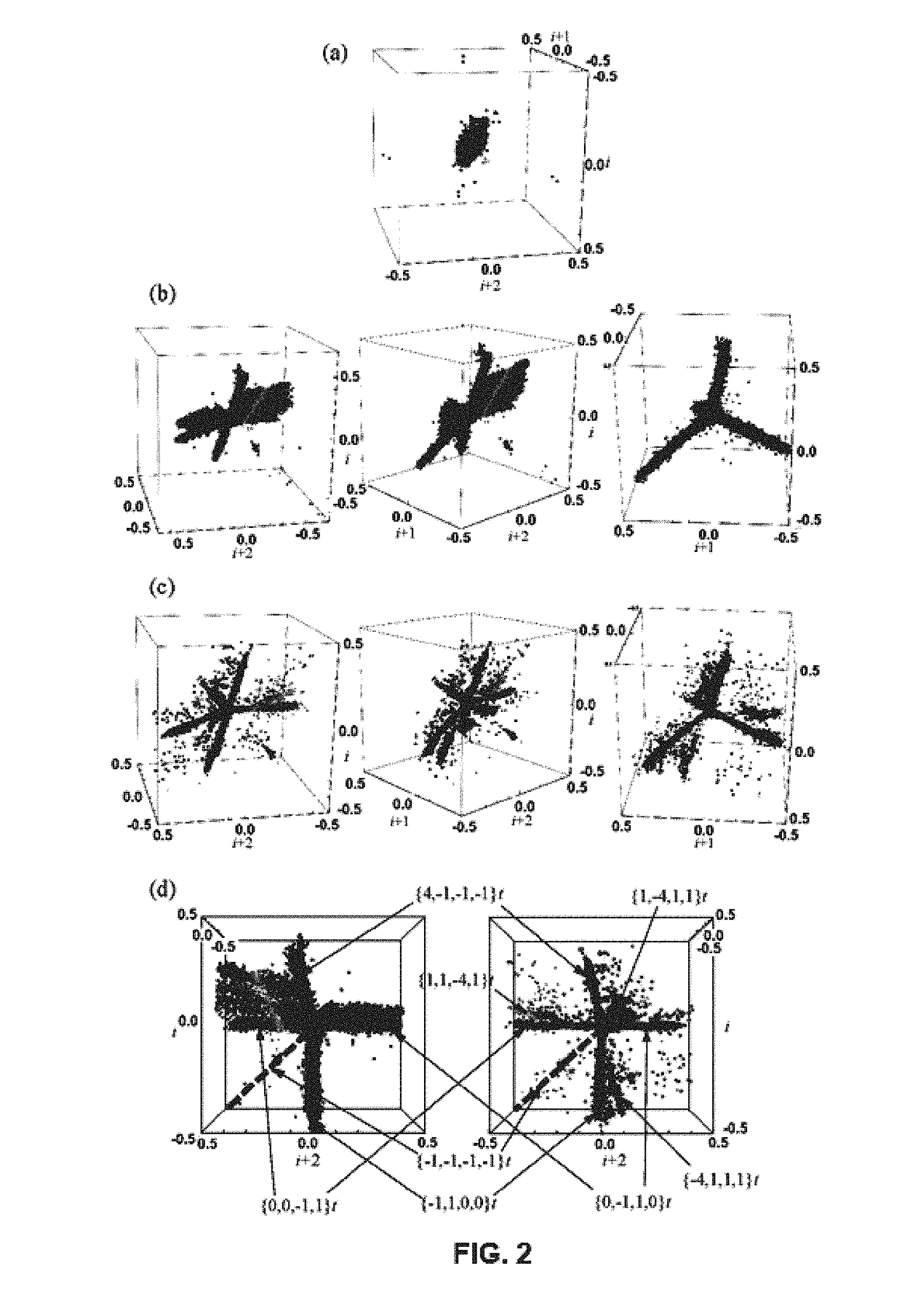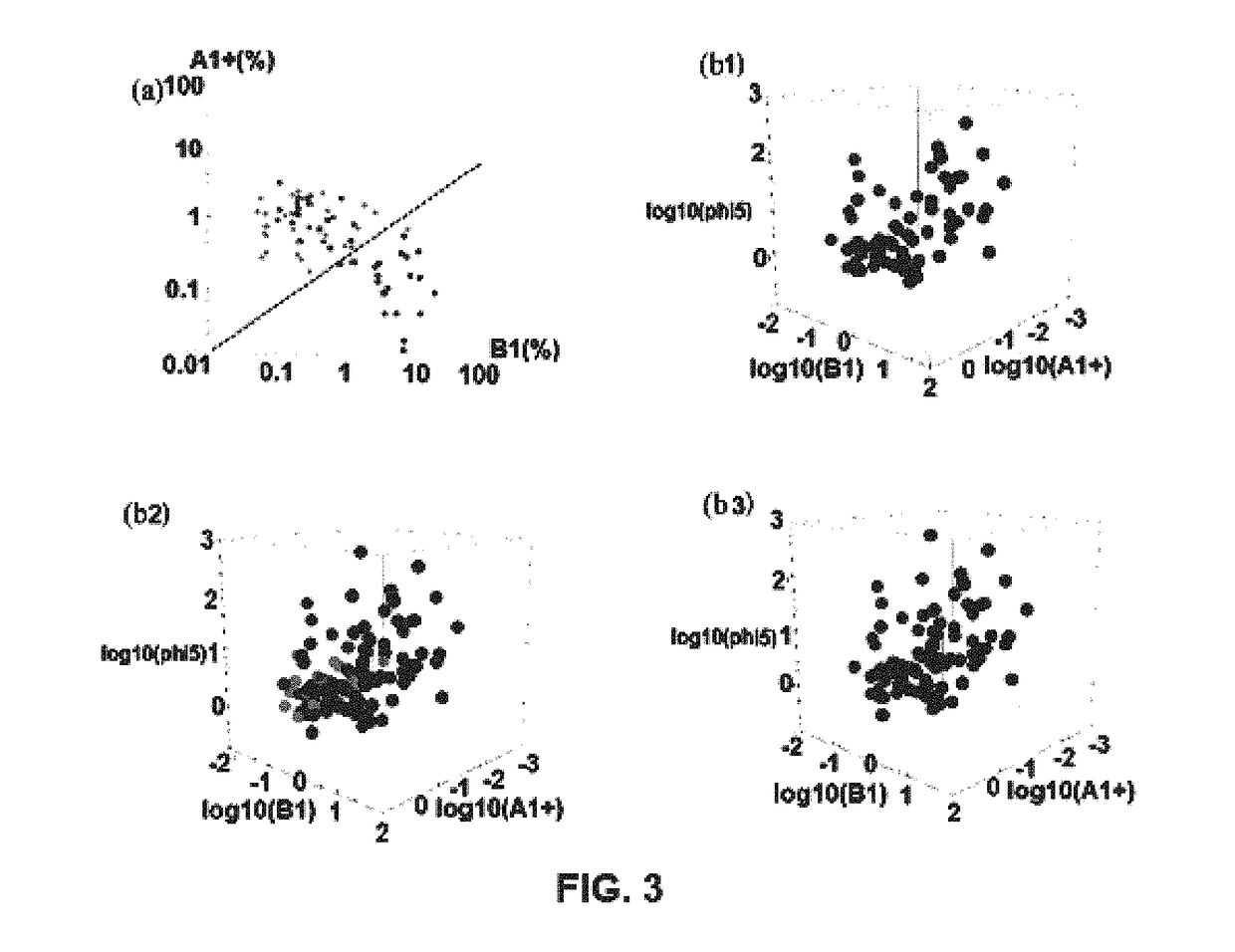Method for obtaining useful data associated with heart rate variability pattern
- Summary
- Abstract
- Description
- Claims
- Application Information
AI Technical Summary
Benefits of technology
Problems solved by technology
Method used
Image
Examples
Embodiment Construction
[0064]A map of Poincare is a graph consisting of the representation of a recurrence map or sequential path of the values having a certain variable in consecutive cycles. Specifically, a two-dimensional (2D) recurrence map is a planar projection where complex paths, with multidimensional characteristics (i.e., specific arrhythmic sequences) are overlapping and indistinguishable. This invention allows for a generalization of said recurrence maps. Among other possibilities, a normalized variability using a moving average of order N=5 can be formulated. This formulation corresponds with the following selection of the fifteen values defining the base algorithm of the methods described in this invention:
{m=0N=5N0=5N1=5N2=5ɛ0=1ɛ1=1ɛ2=0ς0=1ς1=1J0=0J1=0K0=0K1=0K2=0}.
[0065]By means of this selection, referred to as NL (Local Normalization), an expression of the sequential variability {δj}j=1, . . . ,M−4, with
δj={Xj+k〈X〉N,j-1-1}k=0,…,4,〈X〉N,j=∑i=0N-1Xj+i,
is obtained and the representation ther...
PUM
 Login to View More
Login to View More Abstract
Description
Claims
Application Information
 Login to View More
Login to View More - R&D
- Intellectual Property
- Life Sciences
- Materials
- Tech Scout
- Unparalleled Data Quality
- Higher Quality Content
- 60% Fewer Hallucinations
Browse by: Latest US Patents, China's latest patents, Technical Efficacy Thesaurus, Application Domain, Technology Topic, Popular Technical Reports.
© 2025 PatSnap. All rights reserved.Legal|Privacy policy|Modern Slavery Act Transparency Statement|Sitemap|About US| Contact US: help@patsnap.com



